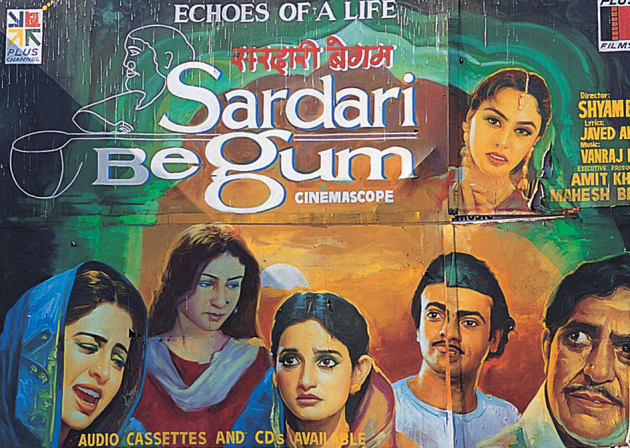Hindi <<HIHN dee,>>, also called Modern Standard Hindi, is spoken by more than 500 million people. It is the principal official language of India. More than two-fifths of India’s people speak one or more of the dialects (language variations) of Hindi. There are many regional and local dialects in India, and each state has its own official language. Hindi is the official language of the capital, Delhi, and seven states. Hindi speakers live mostly in northern India, but Hindi is commonly heard in other parts of the country. Hindi speakers are also found in Nepal, Singapore, South Africa, the United Kingdom, the United States, and many other countries.
Urdu is a sister language of Hindi. The languages are similar in grammar and pronunciation. When written, however, they use different alphabets and scripts. Cultural differences further separate the languages. Indian Hindus, people who practice Hinduism, often speak Hindi. Indian Muslims, people who practice Islam, often speak Urdu. Urdu is also spoken in Pakistan and Kashmir. Scholars sometimes speak of the two languages collectively as Hindi-Urdu. The spoken form is sometimes called Hindustani. Hindi-Urdu is the main language used in Indian films (Bollywood) and in much Indian popular music.

Hindi is an Indo-Aryan language of the Indo-European family. It is part of the New Indo-Aryan (NIA) group. Hindi uses the Devanagari alphabet, which has roots in Sanskrit, the oldest formal written language of India. Devanagari is a phonetic alphabet, so each letter represents a sound. It has 44 letters, with 33 consonants and 11 vowels. Smaller marks called matras represent vowels preceded by a consonant. Matras are written on the symbol of the preceding consonant. The letters are formed by markings that hang down from a horizontal line (see the red script in the movie poster above).

Hindi nouns have gender, number, and case. They can be masculine or feminine, singular or plural, and direct or oblique. Most adjectives agree with the gender, number, and case of the nouns they modify. Hindi has four simple tenses and three aspects. Word order for the Hindi language is subject-object-verb. Hindi is written from left to right, and Urdu is written from right to left. Urdu uses the Persian-Arabic alphabet. English words with Hindi origins include bungalow, shampoo, bandana, and jungle.
Hindi and Urdu are based of the spoken dialect of Delhi, Khari Boli, which means standard speech. The modern literary language is based on Khari Boli, which was written in the Devanagari alphabet. Written Hindi can be traced back to poetry of the 1300's. Hindi prose became prominent in the early 1900’s.
Untitled Document
Can't view the linked articles? Subscribe to World Book Online

World Book Online delivers a progressive sequence of core databases supported by supplemental
tools, such as language translation, graphic organizers, and unique Webquests. Moving from
Early World of Learning to World Book Advanced, World Book Online aligns end-users with their
appropriate learning levels. Each stand-alone site provides additional features to support the
needs of users’ specific capabilities.
The World Book Difference
World Book combines cutting-edge technology with traditional editorial excellence to produce
authoritative, trustworthy, and unbiased content. The digital content is updated in real time and
carefully curated for each learning level. Accessible 24/7, the content is available on a variety of devices.
World Book Online combines 21st-century instructional techniques with timely information.
By breaking down complex topics and using easily understandable text, World Book Online helps to
build fluency and increase comprehension. Featuring single sign-on capability, these sites are paired
with highly visual content to engage even the most reluctant reader. Our collection of resources kindles
a lifelong learning experience for every user. This adherence to clarity, currency, and accuracy makes
World Book’s digital offerings an information hub for the classroom, library, and beyond.
Image 1: The flag of India flies over hundreds of millions of Hindi speakers in India. Credit: © T. Lesia, Shutterstock
Image 2: The Indian film industry produces hundreds of motion pictures every year. Most films are in Hindi (or Hindustani), but some are made in regional languages. Credit: WORLD BOOK photo by David R. Frazier
Image 3: Hindi is spoken in Delhi and the northern states of India. Credit: WORLD BOOK map